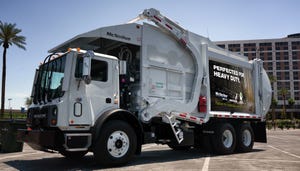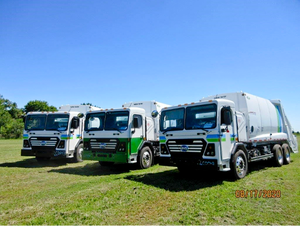recycling: Quality Control Maximizes Market Return For Plastics
February 1, 1997
Andrea Wood
Maintaining the quality of post-consumer material collected for recycling is critical to finding and retaining markets.
The key is to maintain effective communication between recycling coordinators, haulers, and material recovery facility (MRF) operators, their employees and program participants. You must understand market specifications, determine the properties of materials and match program capabilities with market demand.
Before beginning to collect recyclables, match the program to a market. In plastics recycling, there are generally four market types:
* haulers that transport recyclables to handlers or reclaimers for further processing;
* handlers that sort and densify material through baling or granulating;
* reclaimers that convert the resin from bottles, containers or flake into pellets; and
* end users that manufacture products using recycled material.
Specifications and collection re-quirements differ with each market. Before a program begins or is modified, determine from the recycling services provider what plastics are acceptable, how the material should be prepared and in what form, what quality requirements must be met, who is responsible for transportation, what happens if a shipment is rejected and the rates and terms of payment.
Plastics, however, present challenges for recyclers. For example, buyers usually want plastics separated into single-resin streams because they melt at different temperatures during processing. If two plastics that melt at different temperatures are mixed, the feedstock's appearance and performance will be altered and may prevent its use in a particular end product.
Because the same resins can have different properties, markets may ask for plastic bottles (containers with a neck smaller than the base) to be separated from wide-mouthed containers. For example, HDPE milk jugs are blow-molded, while HDPE margarine tubs are injection-molded. These two processes require different fluidity levels, which, if mixed together, produce a fluidity level that may no longer be suitable for some manufacturing.
Quality must be maintained during plastics handling as well as collection. Plastics handling includes the processing, storage and transporting to market. A handler or MRF operator should take several steps to ensure quality control during the process.
Plastics have a high volume-to-weight ratio, and must be compacted to conveniently store and efficiently transport. Bales should be bound with nonrusting, noncorroding material, such as galvanized wire or polyester strapping and have target densities of 10 to 15 pounds per cubic foot.
Before granulating plastics, which are acceptable in some markets, handlers should know the specific equipment requirements and quality specifications.
Typically, plastics must be stored in loose form prior to baling and, once baled, are stored prior to shipment to market. Generally, they require an average of 36 cubic yards of storage space for 10,000 loose bottles or three cubic yards for 10,000 baled bottles. Clean concrete floors are ideal for plastics storage. However, if plastics are stored outside, they should be covered with an ultraviolet, light-protective material.
Consumer education is equally important to quality control. Re-cycling coordinators, haulers and MRF operators should continually educate their employees and program participants about proper handling, sorting and processing of recyclables.
Consumers need to know which plastics the program accepts. Use graphics and simple words whenever possible, such as thumbs-up and thumbs-down symbols. Curbside feedback tags, left by collection truck drivers, are another way to inform residents about materials the program does not accept.
Always explain in detail how the plastics should be prepared. Ask consumers to rinse and crush bottles and throw away their caps and lids. Also, include where to take recyclables or when to set them out for collection.
Because programs and their participants change, quality control education is an on-going process. Remem-ber to distribute information on all program changes and periodically remind participants of the program's specifications.
Don't forget about educating the hauler and MRF operators. At every stage of the recycling process, these employees help control material quality. Train employees about the threat of contaminants to ensure the highest quality of feedstock (see chart, pg. 8).
Following these principles should help increase the value of materials collected for market. Additional information about quality control can be found in Think Quality: A Key to Success in Plastics Recycling. To obtain a free copy, contact: The American Plastics Council, 1801 K St., N.W., Ste. 701-L, Washington, D.C. 20006-1301. (800) 243-5790. Fax: (202) 296-7119.
You May Also Like


